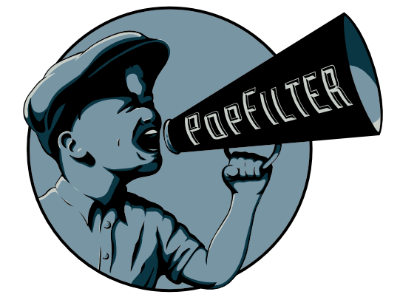POP FILTER VS. THE CLASSICS
POP FILTER
VS.
THE CLASSICS OF 1979
 THE BLACK STALLION
THE BLACK STALLION
Maybe I’m just traumatized from reading The Red Pony in elementary school, but horses in movies make me nervous. Film or otherwise, stories about horses so often bear a price tag of tragedy–if the quadruped isn’t abused or dying, someone else is, as in Black Beauty, Seabiscuit, etc. And if they aren’t making me sad, they’re freaking me out, like that suicidal horse on the boat in The Ring. And then there’s Peter Shaffer’s play Equus… yeah, don’t even get me started. So I’m usually apprehensive about pressing play when confronted with a horse flick.
But the first half of The Black Stallion displays such stunning filmmaking that I forgot all about my phobia. Alec, the young boy, is travelling aboard a ship in 1946 with his father who, in the first scene, is embroiled in the United Nations of poker games. Alec, who’s probably got jack shit to do, is running around the boat when he spies some Arab dudes struggling to control a formidable black stallion. Alec is immediately fascinated with the wild creature, and returns moments later to place some sugar cubes in the open porthole window of the horse’s quarters. Tragedy strikes, of course, but fortunately for me it’s at the beginning of the film, so it’s over and done with rather quickly. The ship catches fire and sinks, and everyone suffers a horrific death–everyone except Alec and the horse. Alec awakes the next morning and discovers that they are both shipwrecked on an island. These first few scenes are incredible. They’re sparsely scored, giving them tension and mystery, eliminating any white noise and compelling you to sit forward in your seat and intimately experience the events.
The segment on the island is similarly spectacular. Alec comes upon the stallion straining frantically against his ropes caught in the rocks. Though frightened, he creeps close enough to the thrashing beast to cut him free of his bonds. Later, the horse saves Alec’s life by trampling a ready-to-strike snake into oblivion. Bit by bit (heh, see what I did there?), the two gain trust in each other and form a friendship that makes their isolated life a little less terrible. The cinematography is just plain gorgeous, with beautiful deep turquoise waves and dramatic cliffs. The scene in which Alec coaxes the stallion into nibbling a leaf in his hand is backlit against the water as the sun sets, throwing the two into silhouette. As they inch closer and closer to the moment they both want, we hear simple hand-struck drums, like an ancient tribal shadow play. The score in the beach scenes features Middle Eastern-inspired woodwinds and percussion, adding energy and fun to the new friends’ play dates. Or, I don’t know, maybe the music was written so the horse wouldn’t forget his Arabian roots.
It’s a little strange that a kid who didn’t grow up on a farm would instinctively know what to do with a horse–how to approach it, calm it, befriend it, let alone learn how to ride it. But the strangest thing about The Black Stallion is the dramatic shift in cinematic style that occurs halfway through the film, and it definitely works against its integrity. When Alec and the horse (now named Black) get rescued and return to Alec’s bereaved mother in the States, this lush film becomes every other horse movie we’ve ever seen–becomes another movie, really. Black bolts from the yard one day and ends up with Henry, a retired horse trainer, played by Mickey Rooney. Alec chases Black down, befriends Henry, then notices all his old trophies covered in dust and cobwebs produced by Obvious Set Design, Inc. Alec predictably asks Henry to teach him to race Black. Then there’s training montages, wise old men, and tension leading up to the Big Race. Even if you haven’t seen it, I don’t need to tell you what happens. Trust me. You already know.
See, here’s another reason I don’t particularly care for horseracing movies. I already know what’s going to happen. They just keep renaming the horse and then telling the story over and over again like nobody will notice.
I have to admit, it was a little strange to watch in 2013. Not much, but a little. The film’s events contain some things that we don’t see too often in moves lately. Things like nobody expressing concern over young children walking long distances unattended to meet strange men–and his mother is worried about him participating in a horse race! Speaking of which, people pinning their professional dreams on children’s abilities and not going to jail–I mean, does anyone even REMEMBER the Industrial Revolution? And women who wear high heels at home, for chrissake. The film takes place in 1946, but it was made in 1979–you’d think they would have relaxed the image of women a little by then (hell, even a little too much!)
To its credit, the film doesn’t descend into treacle. The loss of Alec’s father is dealt with very subtly–almost not at all, but it still deserves points for avoiding the sinkholes of sentimentality that besiege so many “heartfelt†movies.
But does it ultimately remain standing against the cruel winds of Father Time? I guess. It does as well as most of the stuff being churned out by Hollywood today, where the only criteria for a green light are famous actors and a script with words. The Black Stallion still exceeds a lot of today’s films to be sure, but honestly, that’s not saying much.
I’m telling you, though, that first half is really something.-EW
